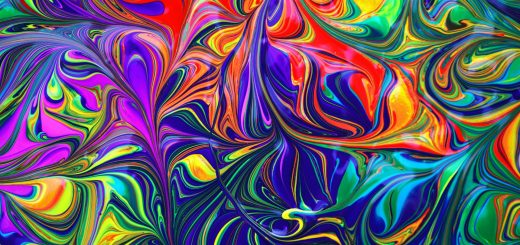Coyote: The Trickster of Native American Legends

Before diving in, please note: This post is for informational purposes only. If you’d like to know more about how we approach topics, feel free to check out our friendly Disclaimer Page.
Hey there, amazing readers! 🖐️ Just a quick note: yes, we know there are a lot of ads here. Trust us, we get it—it’s not the prettiest look, but they help us keep this blog alive and kicking. Those pesky little ads cover the costs of all the behind-the-scenes magic, from hosting and tech stuff to creating content we hope you’ll love.
We’re committed to delivering quality posts, and your support (even just sticking around despite the ads) means everything to us. So, bear with us, and thanks for helping us keep the good vibes rolling. Now, on to the fun stuff! 😉
TRANSLATE BUTTON AT THE END OF THE ARTICLE
Introduction to the Coyote in Native American Legends
The coyote holds a significant place in Native American folklore, often portrayed as a cunning and mischievous trickster figure.
Across various tribes, the coyote’s role in stories ranges from a clever hero to a foolish yet endearing character.
These tales serve as a means of passing down cultural values, teachings, and entertainment from one generation to the next.
As a versatile and complex figure, the coyote embodies both positive and negative traits, making it a central figure in Native American oral traditions.
The Role of Coyote as a Trickster Figure
In Native American legends, the coyote is commonly depicted as a trickster, using its wit and cleverness to outsmart others.
The trickster figure challenges societal norms, disrupts order, and brings about change through its antics.
Despite its sometimes selfish or foolish behavior, the coyote often serves as a teacher, imparting valuable lessons through its actions.
By embodying the trickster archetype, the coyote represents the balance between chaos and order, highlighting the importance of adaptability and creativity in navigating life’s challenges.
Coyote in Different Native American Tribes
The coyote appears in the myths and legends of numerous Native American tribes across North America, each with their own unique interpretations and stories.
For example, in Navajo mythology, the coyote plays a role in the creation story, while in Pueblo folklore, it is seen as a symbol of transformation and adaptation.
Among the Plains tribes, the coyote is a central character in trickster tales that entertain and educate listeners.
Despite variations in portrayal and significance, the coyote remains a prominent figure in the oral traditions of many Indigenous peoples.
Characteristics and Traits of Coyote
The coyote is often depicted as a clever and resourceful creature, able to navigate difficult situations with ease.
Its cunning nature allows it to outsmart foes and overcome challenges, showcasing traits such as intelligence, adaptability, and resilience.
However, the coyote’s cleverness can also lead to trouble, as its schemes sometimes backfire or cause chaos.
In Native American stories, the coyote’s dual nature reflects the complexities of human behavior, reminding listeners of the importance of balance and self-awareness.
Coyote’s Importance in Oral Traditions
Within Native American cultures, oral traditions play a vital role in preserving history, values, and beliefs.
The coyote features prominently in these narratives, serving as a bridge between the past and the present.
Through storytelling, Indigenous communities pass down knowledge, morals, and cultural identity from one generation to the next.
The coyote’s presence in these tales reinforces the interconnectedness of all living beings and the cyclical nature of life, highlighting the enduring legacy of Indigenous storytelling practices.
The Many Faces of Coyote in Stories
In Native American folklore, the coyote takes on various roles and personas, depending on the context of the story.
Sometimes portrayed as a bumbling fool, other times as a wise trickster, the coyote’s multifaceted character allows for a wide range of narratives and interpretations.
By embodying different traits and characteristics, the coyote reflects the diversity of human experiences and emotions, resonating with listeners on a personal and universal level.
Through its many faces, the coyote invites introspection and contemplation, encouraging audiences to explore different aspects of themselves and the world around them.
Lessons Learned from Coyote Tales
Coyote stories often convey important lessons and moral teachings, imparted through the actions and consequences of the trickster figure.
By observing the coyote’s behavior, listeners learn about the value of humility, honesty, and respect for others.
The tales also warn against the dangers of greed, pride, and arrogance, showing the repercussions of selfish or thoughtless actions.
Through these timeless narratives, Native American cultures instill core values and principles in their communities, fostering a sense of unity and shared responsibility among individuals.
Coyote’s Relationship with Other Animals
In Native American legends, the coyote frequently interacts with other animal characters, forming complex relationships that reflect the interconnectedness of the natural world.
From the wise owl to the sly fox, each creature represents different qualities and attributes that complement or contrast with the coyote’s own traits.
Through these interactions, listeners gain insights into the dynamics of human relationships, the importance of cooperation, and the interconnected web of life.
The coyote’s relationships with other animals serve as metaphors for social dynamics, communication styles, and the balance of power in the natural world.
Coyote’s Cultural Significance
As a central figure in Native American folklore, the coyote holds immense cultural significance for Indigenous communities.
Its presence in stories, rituals, and ceremonies reflects the values, beliefs, and worldview of different tribes.
The coyote symbolizes resilience, adaptability, and survival in the face of adversity, serving as a source of inspiration and guidance for individuals and communities.
By honoring the coyote in their traditions, Native Americans reaffirm their connection to the land, the ancestors, and the spiritual forces that shape their lives.
Modern Interpretations of Coyote
In contemporary times, the coyote continues to captivate audiences and inspire new interpretations in art, literature, and popular culture.
Through visual art, music, film, and literature, artists and creators reimagine the coyote’s role and significance in modern contexts.
These contemporary adaptations reflect evolving attitudes towards nature, spirituality, and Indigenous cultures, shedding light on the enduring relevance of the coyote as a symbol of resilience and creativity.
By blending tradition with innovation, modern interpretations of the coyote celebrate its timeless appeal and universal themes.
Controversies Surrounding Coyote’s Portrayal
Despite the coyote’s enduring popularity in Native American folklore, its portrayal in modern media and popular culture has sparked controversy and debate.
Concerns have been raised about cultural appropriation, misrepresentation, and stereotyping of Indigenous beliefs and practices.
Some critics argue that mainstream depictions of the coyote oversimplify or distort its significance, reducing it to a one-dimensional caricature.
As a result, efforts are being made to promote authentic and respectful portrayals of the coyote in storytelling, art, and entertainment, ensuring that its cultural heritage is preserved and honored.
Preserving and Sharing Coyote Stories
To safeguard the rich heritage of coyote stories and ensure their continued relevance, Indigenous communities and cultural institutions are actively engaged in preserving and sharing these narratives.
Through oral history projects, educational programs, and digital archives, efforts are underway to document and transmit traditional stories to future generations.
By involving community members, scholars, and storytellers in these initiatives, Indigenous cultures can maintain their storytelling traditions while adapting to the challenges of the modern world.
Through collaborative efforts and a commitment to cultural preservation, the legacy of the coyote in Native American legends will endure for years to come.
Conclusion
In conclusion, the coyote’s role as a trickster figure in Native American legends is a testament to its enduring significance in Indigenous cultures.
Through its cleverness, resourcefulness, and adaptability, the coyote embodies timeless lessons and teachings that resonate with audiences of all ages.
As a central character in oral traditions, the coyote bridges the past and the present, connecting individuals to their cultural roots and shared heritage.
By preserving and sharing coyote stories, Indigenous communities ensure that these valuable narratives continue to inspire, educate, and entertain future generations.
The coyote’s legacy as a trickster, teacher, and cultural symbol will continue to shape and enrich Native American folklore for years to come.

The Enlightenment Journey is a remarkable collection of writings authored by a distinguished group of experts in the fields of spirituality, new age, and esoteric knowledge.
This anthology features a diverse assembly of well-experienced authors who bring their profound insights and credible perspectives to the forefront.
Each contributor possesses a wealth of knowledge and wisdom, making them authorities in their respective domains.
Together, they offer readers a transformative journey into the realms of spiritual growth, self-discovery, and esoteric enlightenment.
The Enlightenment Journey is a testament to the collective expertise of these luminaries, providing readers with a rich tapestry of ideas and information to illuminate their spiritual path.
Our Diverse Expertise 🌟
While our primary focus is on spirituality and esotericism, we are equally passionate about exploring a wide range of other topics and niches 🌍📚. Our experienced team is dedicated to delivering high-quality, informative content across various subjects ✨.
To ensure we provide the most accurate and valuable insights, we collaborate with trusted experts in their respective domains 🧑🏫👩🏫. This allows us to offer well-rounded perspectives and knowledge to our readers.
Our blog originally focused on spirituality and metaphysics, but we’ve since expanded to cover a wide range of niches. Don’t worry—we continue to publish a lot of articles on spirituality! Frequently visit our blog to explore our diverse content and stay tuned for more insightful reads.







